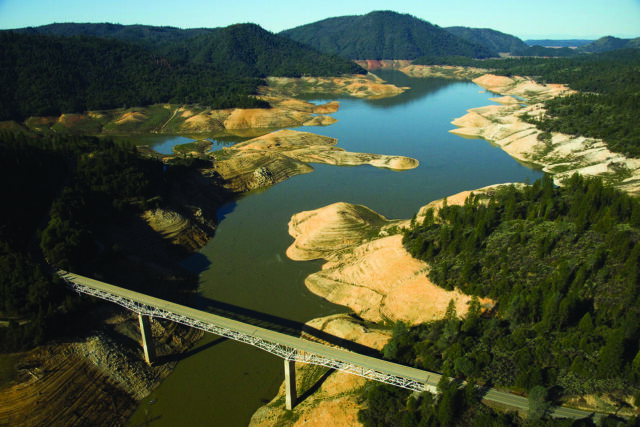What are key California water priorities for the coming year, in light of ongoing disruptions from the pandemic, the recession, lingering drought, and a record-breaking fire season? The PPIC Water Policy Center brought together three panels of experts to discuss possibilities at our annual water priorities conference.
The panels covered urgent challenges: providing safe, affordable drinking water for all while maintaining water suppliers’ fiscal health; managing groundwater sustainably to support water users, the economy, and the environment; and supporting these priorities with policies and funding adequate to the tasks at hand.
The events of 2020 gave added weight to ongoing efforts to ensure all Californians have access to safe and affordable drinking water. Panelists discussed a growing water affordability crisis—water prices have risen about 45% above inflation over the past decade, said Greg Pierce of UCLA’s Luskin Center for Innovation—and the need to plan for what happens when the current moratorium on water shutoffs ends.
“Many people are struggling with job losses or family illness. They need a safety net,” said Gloria Gray, board chair of the Metropolitan Water District in Southern California. Solutions will require state and federal support, she noted.
The panel on managing groundwater had a heavy focus on prioritizing multiple benefit projects involving a range of stakeholders. Eric Averett of the Rosedale-Rio Bravo Water District called for water investments “where all of the stakeholders have an interest in seeing the project succeed”—for example, supply projects that include environmental water allocations and safe drinking water components, or groundwater recharge projects that build habitat. “Projects that are multi-beneficial can help break down barriers” between parties, he said. And Paul Gosselin from Butte County noted how groundwater planning is already sparking new kinds of collaboration in his region.
One essential gap in the groundwater sustainability planning process thus far is how to address the harm that groundwater overdraft causes rural communities using shallow wells for drinking water supply. “We need a proactive drought resiliency plan” for at-risk communities—and a quick response plan to mitigate dry wells, said Angela Islas of Self-Help Enterprises.
Ecosystems that depend on groundwater are also at risk. Sandi Matsumoto of The Nature Conservancy noted that up to half of the state’s freshwater species could go extinct in coming decades without “radical changes to how water in managed.” Matsumoto called for the establishment of a federal Office of Groundwater Sustainability “to harness the power of the federal government—not only for the science but also on land management.”
For the final panel, government experts focused on policy priorities to resolve these challenges—from addressing water inequities by putting more resources into securing safe and affordable supplies, to forming balanced projects with broad buy-in from diverse groups of stakeholders, to improving cooperation between state and federal agencies managing supplies, floods, and wildfires in key watersheds.
Updating management approaches to reflect a changing climate will be key, said Karla Nemeth, director of the state’s Department of Water Resources. Her top priority for the incoming Biden-Harris administration would be to use the first 100 days to lay a course for how we prepare for extreme hydrology—“because that’s going to drive investment in the second 100 days in new and aging infrastructure” needed to adapt to a changing climate.
How to secure state and federal financial support for such work? Joaquin Esquivel, chair of the State Water Board, described an ongoing survey of water utilities that will assess the extent of their funding gap due to nonpayment, which will help inform the state and federal response. Matt Muirragui of the US House Committee on Natural Resources said, “There is absolutely bipartisan interest, both in the House and the Senate, in making sure water infrastructure development in particular is part of any stimulus that comes together.” He noted that California can best position itself for federal funding by documenting benefits of potential projects, and bringing together diverse stakeholders around project ideas.
One thing is clear from these panelists’ varied perspectives: water is something we can never take for granted, and must all work together to safeguard and share. Kathryn Sorensen, former director of the City of Phoenix’s water department, captured this essential truth: “One silver lining of the pandemic is that it really has brought into focus the fact that community water systems are the foundation of public health,” she said. “I hope that people keep in their minds the importance of these systems, and keep supporting them.”
We invite you to watch the videos from this event:
Session 1: Funding water systems while ensuring affordability and equity
Session 2: Collaborative approaches to foster groundwater sustainability
Session 3: Priorities for a water-resilient California





